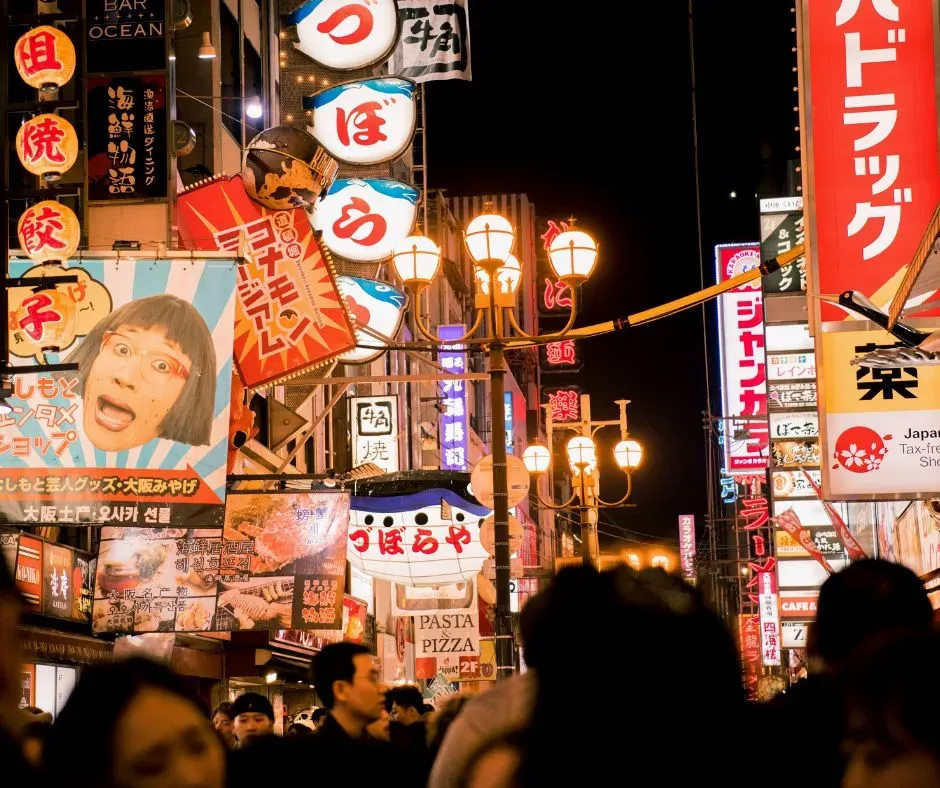Updated on August 5th, 2025: This guide will explain the requirements, application process, and benefits of the Japanese digital nomad visa. Whether you're a freelancer, entrepreneur, or remote employee, this program offers a unique opportunity to combine work and travel.
🌱 Health Insurance for Japan's Digital Nomad Visa
🇯🇵 What is the Japan Digital Nomad Visa?
The visa is officially categorized as the Designated Activities Visa (Digital Nomad). It allows foreign nationals to stay in Japan for up to 6 months while working remotely for employers or clients located outside of Japan. The visa does not permit engaging in local employment or business activities with Japanese entities.
Introduced in April 2024, the Digital Nomad Visa aims to attract remote professionals and digital workers seeking a temporary base in Japan. It falls under Japan’s Designated Activities residency category as defined by the Immigration Control and Refugee Recognition Act.

⭐️ Key Benefits of the Japanese Digital Nomad Visa
👩🏽💻 Work remotely for overseas companies while enjoying life in Japan
💰 No Japanese income tax if income is earned abroad and stay is under 183 days
📌 At a Glance: Visa Facts for 2025
| Feature | Details |
|---|---|
| Duration | Up to 6 months |
| Application Fee | ∼ $22-$43 USD |
| Processing Time | 1-3 months |
| Minimum Annually Income | Yen 10,000,000 (∼ $66,400 USD) |
| Family Inclusion | Yes (Spouse and children under 25) |
| Renewal Options | No formal extension; must reapply |
👩💻 Who Can Apply for the Japan Digital Nomad Visa?
To qualify for Japan’s Digital Nomad Visa in 2025, you must:
- Hold a passport from one of Japan’s 49 eligible countries/territories (e.g., US, UK, EU member states, Australia, Singapore)
- Work remotely for overseas employers or clients (no local Japanese–sourced work permitted)
- Earn at least ¥10,000,000 per year (≈ ¥833,000/month; ~ USD 66,400)
- Show proof of health insurance covering a minimum of ¥10,000,000 for medical treatment, injury, or death
- Have a passport valid for at least 6 months beyond your intended stay, with 1.5+ blank pages available
✏️ Step-by-Step Application Process (2025 Updated)
Before You Apply: Preparation Checklist
- A valid passport with at least 6 months of remaining validity and 1½+ blank pages
- A Certificate of Eligibility (COE) issued by the Immigration Services Agency (if using the COE route)
- A passport-style photo (4.5 × 4.5 cm, plain white background, taken within the last 6 months)
- A letter from your employer or clients confirming your remote work arrangement, annual income (¥10,000,000+), and contract duration
- Bank statements or tax certificates covering the past 3 months showing foreign-sourced income above the minimum threshold
- A health insurance certificate (or policy summary) evidencing coverage of at least ¥10,000,000 for medical treatment, injury, or death
- Certified translations of any documents not in Japanese or English (translator’s name, signature, and contact details required)
Detailed Application Walkthrough
- Obtain your COE by submitting the sponsor-led application package in Japan (Immigration Services Agency).
- Receive the COE (typically within 1-3 months) and confirm all details match your passport.
- Complete the visa application form
- Gather all documents: COE (or full supporting docs if no COE), passport, photo, employment letter, bank/insurance proofs, translations.
- Submit your application in person or by mail to the Japanese Embassy/Consulate in your home country.
- Pay the visa application fee (approx. ¥3,300–¥6,600, depending on single/multiple entry).
- Attend biometric capture and any interview if requested by the consulate.
- Wait for processing (usually 5–10 business days after submission of a valid COE).
- Collect your visa sticker, then plan your entry into Japan within 3 months of the COE’s issue date.
Common Application Mistakes and How to Avoid Them
- Submitting blurry or incorrectly sized photos (ensure strict compliance with 4.5 × 4.5 cm on white background).
- Providing income proof that doesn’t clearly total ¥10,000,000/year (itemize salaries, bonuses, contracts).
- Using insurance policies that lack explicit ¥10,000,000 coverage or don’t list Japan as a coverage territory.
- Omitting the COE number or sending an expired COE (always check validity dates).
- Failing to translate and certify non-Japanese/English documents properly (use a qualified translator).
- Applying too close to your intended travel date, leaving insufficient time for COE issuance and visa stamping.
✅ Japan Digital Nomad Visa Requirements (Complete List)
Required Documents
- Passport copy (biographic page)
- Passport-style photo (4.5 × 4.5 cm, plain white background)
- Certificate of Eligibility (COE) or sponsor letter issued by your Japanese host
- A letter from your foreign employer or clients confirming remote work status, position, and annual income (¥10,000,000 +)
- Bank statements from the last 3 months showing foreign-sourced deposits meeting the income threshold
- Health insurance certificate or policy summary covering at least ¥10,000,000 for medical treatment, hospitalization, and repatriation
- Certified translations of any documents not in Japanese or English
Document Deep Dive
What officials are looking for
- Employment Letters: Must clearly state job title, remote‐work arrangement, annual salary (¥10,000,000 +), contract duration, and that all work is performed outside Japan.
- Bank Statements: Should show regular foreign-source credits that average at least ¥833,000/month (¥10,000,000/year), with clear account holder name matching the passport.
- Insurance Policies: Must cover emergency medical care, hospitalization, and repatriation up to a minimum of ¥10,000,000
- Translations/Apostilles: Any non-Japanese/English originals (e.g., birth/marriage certificates) require a certified translation and, if applicable, an apostille or notarization.
- COE Verification: Ensure the COE number, issue date, and applicant details exactly match your passport and application form.
💴 Japan Digital Nomad Visa Cost Breakdown
- Visa application fee: ¥3,300 (~ $22 USD) for single-entry; ¥6,600 (~ $43 USD) for multiple-entry
- COE issuance: Free via sponsor in Japan (no direct charge)
- Translations and certifications: Varies ($20–$100+ USD) for translator and apostille/notarization
- Courier/postage: ~$20 USD (round-trip documents to embassy/consulate)
📚 Tax Implications for Digital Nomads in Japan
- Tax residency: Short-term “Designated Activities” holders staying under six months are non-residents, taxed only on Japan-sourced income.
- Foreign-sourced income: Earnings remitted from overseas employers or clients are not subject to Japanese income tax for non-residents.
- Double taxation treaties: Japan maintains treaties with over 60 countries (e.g., US, UK, Canada, Australia) to prevent dual taxation on the same income.
• Track your days in Japan to confirm non-resident status
• Reference your home country’s tax treaty with Japan for exemptions
• Consult an international tax advisor if planning multiple entries or longer stays
🏦 Banking and Financial Logistics for Digital Nomads in Japan
Opening a Bank Account
Most Japanese banks require a Residence Card (在留カード), which is not issued under the 6-month Digital Nomad “Designated Activities” visa. As a result, you generally cannot open a local yen-denominated account through traditional banks like MUFG, SMBC, or Resona.
Instead, consider these alternatives:
- Multi-currency fintech accounts (Wise, Revolut, Wise Business) that let you hold, convert, and spend JPY
- International wire transfers into a foreign-based bank account
- Prepaid travel cards (Wise Borderless Card, Revolut) for everyday spending
• Exchange rate (August 2025): ~ ¥145/USD
• ATMs at 7-Eleven, Lawson, and international airports accept major cards (Visa, Mastercard, Amex) 24/7
• ATM withdrawal fees: ~ ¥110–¥220 per transaction, plus your bank’s foreign-exchange fee
• Cash prevalence: Many small shops, taxis, and ryokan remain cash-only—always carry sufficient yen coins and bills.
🏠 Living in Japan as a Digital Nomad
Cost of Living
Estimated monthly expenses for a solo nomad (in JPY and USD):
- Rent: ¥100,000–¥150,000 (≈ $680–$1,020)
- Food & groceries: ¥30,000–¥50,000 (≈ $200–$340)
- Coworking membership: ¥15,000–¥30,000 (≈ $100–$200)
- Local transport (commuter pass or occasional rides): ¥10,000–¥15,000 (≈ $70–$100)
Where to Live
| City | Highlights | Cost | Internet | Community |
|---|---|---|---|---|
| Tokyo | World‐class amenities, nightlife, culture | High | Very fast (1 Gbps) | Very strong |
| Osaka | Food scene, friendly locals, lower rent than Tokyo | Medium-High | Fast (500 Mbps) | Strong |
| Kyoto | Historic charm, temples, quieter living | Medium | Fast (300 Mbps) | Moderate |
| Fukuoka | Coastal parks, startup scene, compact city | Medium | Fast (200 Mbps) | Growing |
| Sapporo | Four seasons, outdoor activities, spacious | Medium | Moderate (100 Mbps) | Emerging |
Remote Infrastructure
- Internet speeds: Major metros offer 100–1 000 Mbps fiber; even smaller cities often have 100 Mbps services.
- Coworking spaces: Popular chains include WeWork, Regus, and local hubs like Impact HUB Tokyo, Hive Shibuya, and The Company Osaka.
- Café work: Cafés are generally quiet; “Noisli”–style work cafés exist, but always confirm Wi-Fi availability and power outlets.
- Mobile data: Major carriers (NTT Docomo, SoftBank, au) and MVNOs (IIJmio, Rakuten Mobile) offer SIM-only plans with 5–20 GB for ¥2,000–¥4,000/month.
- Public Wi-Fi: Available in many train stations, airports, and tourist spots—but speeds and reliability vary.

🏥 Healthcare for Digital Nomads in Japan
Insurance & Healthcare Access
- Private insurance required: As a short-term “Designated Activities” visa holder, you are not eligible for Japan’s National Health Insurance. You must maintain a private policy covering medical treatment, hospitalization, repatriation, and injury (minimum ¥10,000,000 coverage).
- Quality medical facilities: Major cities (Tokyo, Osaka, Yokohama, Fukuoka) offer world-class private hospitals and clinics, many with English-speaking staff or interpreter services.
- Public hospitals: Technically open to anyone, but without NHI you’ll pay full price upfront (¥10,000–¥30,000 per visit), then claim reimbursement from your insurer.
- Pharmacies and prescriptions: Community pharmacies are widespread; most prescription drugs require a doctor’s note. Over-the-counter remedies (e.g., cold medicine) are available without prescription.
- Emergency services: Dial 119 for ambulance or fire services. Hospitals typically direct you to the appropriate ER; ensure your insurer covers emergency transport and treatment.
⏭️ After Your Visa Expires: What Next?
- You can reapply for a new Designated Activities (Digital Nomad) visa with a fresh COE and updated documents.
- Or switch to another visa category (e.g., Spouse of Japanese National, Investor/Business Manager, Engineer/Specialist in Humanities) if you meet those requirements.
- There is no official grace period—you must depart Japan before your 6-month status expires.
- Time spent under the Digital Nomad visa does not count toward permanent residency or long-term “Zairyū” status.
❓Frequently Asked Questions
Can I apply from within Japan?
No. You must apply for the Digital Nomad (“Designated Activities”) visa at a Japanese embassy or consulate in your home country or country of legal residence. You cannot change status to this visa while already in Japan on a tourist or other short-term entry.
Can I bring my family?
Yes. Spouses and unmarried children under 18 may apply as dependents alongside the principal applicant. You’ll need to submit proof of relationship (marriage/birth certificates) plus the same core documents (income, insurance, COE or sponsor letter).
Can I work for Japanese clients?
No. All work under this visa must be performed for overseas employers or clients; you may not provide services to Japanese–based companies or bill Japanese entities.
Can I leave and return during the visa period?
Yes. You may exit and re-enter Japan freely within your 6-month visa validity, provided your visa sticker and passport remain valid. Always carry your COE copy or visa grant notice when traveling.
What if I change jobs?
You may update your employment or client arrangements mid-stay — just ensure your total annual income still meets the ¥10 000 000 threshold and that your employer/client letter reflects the new arrangement. No new visa application is required unless your circumstances affect your eligibility (e.g., income drops below the minimum).
🚀 Resources and Tools for Digital Nomads
- Official websites: Ministry of Foreign Affairs Visa Portal
- Visa agencies: iVisa
- Community: Digital Nomads Japan Facebook Group
- Language: Duolingo, Baselang, Italki
🏁 Conclusion
Japan’s Digital Nomad Visa offers a unique opportunity to experience cutting-edge urban life and rich culture while working remotely under a simplified six-month status. Although it doesn’t grant a path to permanent residency, the streamlined application process and quality infrastructure in cities like Tokyo, Osaka, and Fukuoka make it an attractive base for global professionals seeking a dynamic yet temporary home in Asia.
Whether you’re a freelancer, contractor, or entrepreneur, this visa provides legal peace of mind, high-speed connectivity, and unparalleled work-life balance. Use the resources above to plan your move, prepare your documents, and connect with the growing community of remote workers thriving in Japan.










